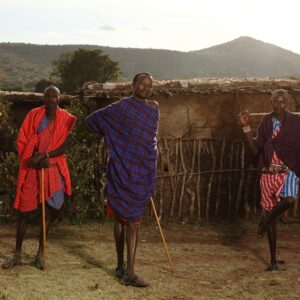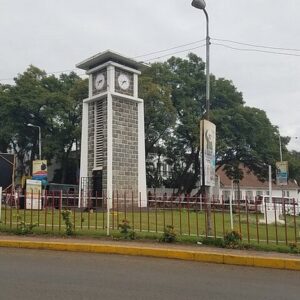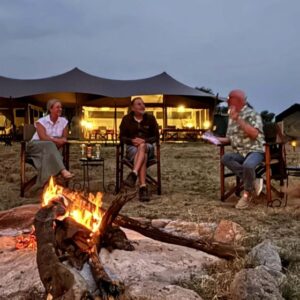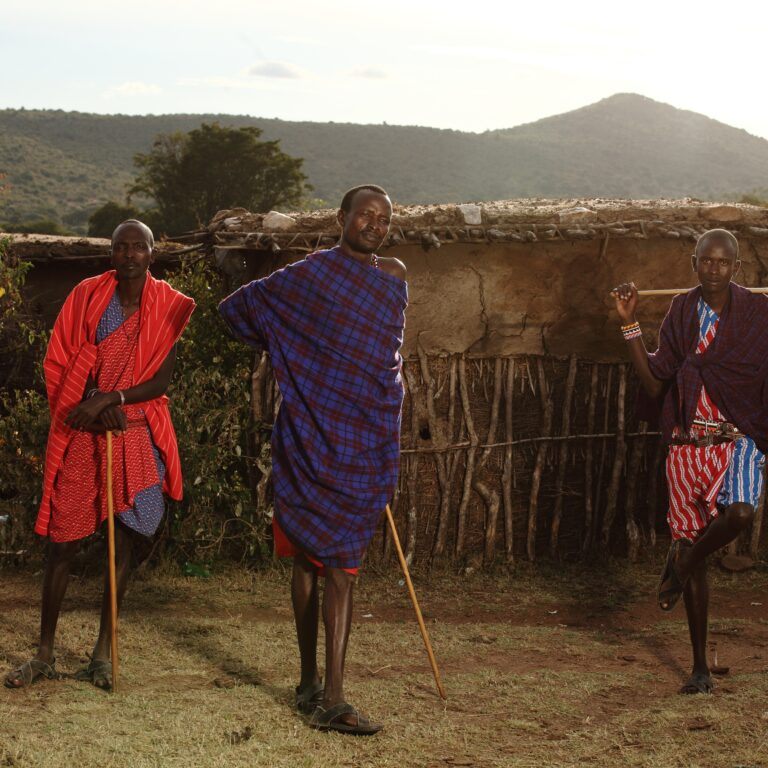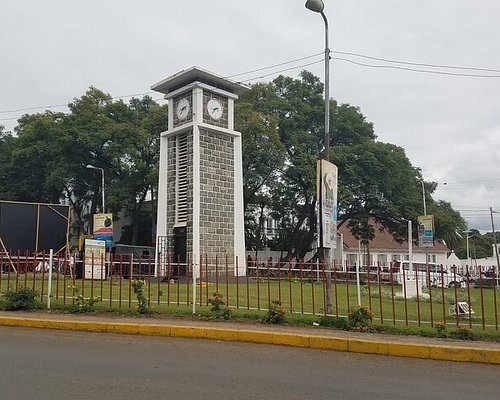Mount Kilimanjaro is not an active volcano. It’s classified as a dormant volcano, meaning it hasn’t erupted in a long time and, not expected to erupt soon. While some gas emissions from its crater exist, they are minimal and don’t indicate imminent volcanic activity. Mount Kilimanjaro is a stratovolcano, also known as a composite volcano. This type of volcano characterized by its steep, conical shape, built up over time by layers of hardened lava, volcanic ash, and other volcanic materials. Kilimanjaro composed of three volcanic cones: Kibo, Mawenzi, and Shira. While Kibo is dormant and could potentially erupt again, Mawenzi and Shira are extinct. Mount Kilimanjaro, Africa’s majestic rooftop, stands as a prominent landmark in Tanzania, drawing thousands of climbers annually. Its snow-capped Uhuru Peak, soaring to 5,895 meters (19,341 feet), is a beacon for adventurers. However, beneath its serene facade lies a fascinating geological history, prompting the question: Is Mount Kilimanjaro an active volcano?
Dormant vs. Active: Defining Volcanic States
Kilimanjaro is not currently erupting or showing signs of imminent eruption. Also not considered extinct as there is still a possibility of future activity. To understand Kilimanjaro’s status, it’s crucial to differentiate between dormant and active volcanoes. An active volcano is one that has erupted in historical times or shows signs of ongoing unrest, such as seismic activity, gas emissions, or ground deformation. A dormant volcano, on the other hand, one not erupted for a significant period but still considered capable of erupting again. Extinct volcanoes are those believed to be incapable of future eruptions.
Kilimanjaro’s Volcanic Activity: A Tripartite Giant
Mount Kilimanjaro, Africa’s highest peak, a massive dormant stratovolcano formed by three distinct volcanic cones. Kibo, Mawenzi, and Shira. While Shira and Mawenzi considered extinct. Kibo. The tallest and central cone, dormant and holds the potential for future eruptions. Though no significant activity observed in recent years. Kilimanjaro is not a single volcano but a stratovolcano composed of three distinct cones: Kibo (the highest), Mawenzi, and Shira. All three are technically volcanoes, but their activity levels differ. Mawenzi and Shira considered extinct, having experienced their last significant eruptions millions of years ago, leading to extensive erosion. Kibo, however, tells a different story.
Gas Emissions: A Whisper of Activity
While Kibo hasn’t had a major explosive eruption in recorded history, it does exhibit signs of lingering volcanic activity. Gas emissions, primarily sulfur dioxide and hydrogen sulfide observed from fumaroles within Kibo’s crater. These emissions are a clear indication of a molten magma chamber beneath, releasing gases as pressure builds or as the magma cools and degasses. This constant release of gases suggests that Kibo is not entirely dormant but rather in a state of repose, a characteristic often associated with active, albeit quiet, volcanoes.
Safety for Climbers: A Well-Monitored Giant
Despite the presence of gas emissions, it is overwhelmingly safe to climb Kilimanjaro. The level of volcanic activity constantly monitored by scientists, and there no indications of an imminent eruption. The gases released typically dispersed by winds and pose no significant threat to climbers on the standard routes. Park authorities and tour operators well-versed in any potential risks, and safety is paramount.
Active Volcanoes Map: Kilimanjaro’s Place
Kilimanjaro situated within the East African Rift Valley. A seismically and volcanically active zone where the African tectonic plate splitting apart. This rift is home to numerous active and dormant volcanoes, including the likes of Ol Doinyo Lengai. While Kilimanjaro doesn’t erupt with the frequency of some of its more volatile neighbors, its location firmly places it within a region known for ongoing geological processes.
Will Kibo Erupt Again? The Million-Dollar Question
The consensus among geologists is that Kibo dormant volcano with the potential to erupt again. While there’s no way to predict the exact timing, the presence of an active magma chamber, evidenced by gas emissions and minor seismic activity, confirms its potential. Future eruptions likely to be effusive (lava flows) rather than explosive, due to the type of magma present, but monitoring remains crucial.
How Was Mount Kilimanjaro Formed? A Tale of Tectonic Forces
Kilimanjaro’s formation a direct consequence of the immense tectonic forces at play within the East African Rift Valley. As the African plate slowly pulls apart, molten rock from the Earth’s mantle rises to the surface, leading to volcanic activity. Over millions of years, successive eruptions of lava, ash, and rocks built up the three distinct cones that comprise Kilimanjaro today. The massive size of Kilimanjaro a testament to the sheer volume of material erupted over geological time.
The Eruption History of Mount Kilimanjaro: A Deep Past
While precise dates challenging to pinpoint, geological studies have pieced together Kilimanjaro’s eruption history. Shira, the oldest cone, with activity beginning several million years ago, eventually collapsed to form the Shira Plateau. Mawenzi developed later, also experiencing significant eruptive phases and subsequent erosion. Kibo, the youngest and largest cone, with its most recent major eruption estimated to have occurred around 150,000 to 200,000 years ago. Although smaller events, like ash emissions, may have happened much more recently. The last significant activity leading to the current summit caldera its believed to have been around 360,000 years ago.
Is Kilimanjaro a Volcano? Geological Facts and History
Unequivocally, yes, Kilimanjaro is a volcano. Its very structure, composition, and geological history entirely consistent with volcanic origins. The presence of a caldera, lava flows, ash deposits, and the characteristic conical shape all point to its volcanic nature. It’s ongoing subtle activity, particularly from Kibo, reinforces its classification as a potentially active, albeit currently quiescent, volcano.
Ol Doinyo Lengai Volcano: A Stark Contrast
To further understand Kilimanjaro’s status, it’s helpful to consider Ol Doinyo Lengai Volcano, located further south in the East African Rift Valley. Unlike Kilimanjaro’s slow, subtle activity, Ol Doinyo Lengai highly active volcano, known for its unique natrocarbonatite lava, which flows at much lower temperatures and appears almost black in daylight. Its frequent, albeit typically effusive, eruptions provide a stark contrast to Kilimanjaro’s gentle degassing, highlighting the spectrum of volcanic activity in the region.
Is it Safe to climb Kilimanjaro? The Final Verdict
In conclusion, its exceptionally safe to climb Kilimanjaro. While Kibo a dormant volcano with the potential for future eruptions, its current activity is minor and closely monitored. The primary risks associated with climbing Kilimanjaro are altitude sickness and the inherent dangers of mountaineering, not volcanic activity. The allure of standing on Africa’s highest peak, a majestic product of Earth’s powerful forces, remains a safe and unforgettable adventure.
How many times has Mount Kilimanjaro erupted?
Mount Kilimanjaro, a dormant triple volcano, has had multiple eruption periods over millions of years, with the last major eruption occurring around 360,000 years ago. Mount Kilimanjaro’s eruption history includes more recent volcanic activity dating to approximately 150,000-200,000 years ago, with some sources suggesting volcanic activity as recent as 200 years ago. While Kibo, one of the three cones. It’s considered dormant and could potentially erupt again. Scientists currently observe no signs of an imminent eruption.
How often does Mount Kilimanjaro erupt?
Mount Kilimanjaro, specifically its Kibo cone, its considered dormant and has not had a major eruption in at least 150,000 to 200,000 years, with the last significant volcanic activity. Such as minor lava flows, occurring about 360,000 years ago. While Kibo is classified as dormant rather than extinct, scientists assess the likelihood of a future eruption in the near future as very low.
When was Mount Kilimanjaro’s last eruption, and will it erupt again?
Kilimanjaro Geology
Tanzania Active Safari Tours
10 Best Serengeti National Park Tours & Trips
Active Tanzania Adventures
Mount Kilimanjaro eruption damage
Mount Kilimanjaro has not experienced a significant volcanic eruption in the last 150,000 years, and the last eruption created a powerful and destructive event with landslides, flooding, and ashfall that affected the surrounding environment and communities. While the Kilimanjaro mountain considered dormant with no immediate threat of a future eruption, it has experienced frequent fires, with a notable one in 2022 that destroyed a large area of the ecosystem and impacted tourism infrastructure, though tourism activities continued with minimal interruption due to extensive firefighting efforts.


